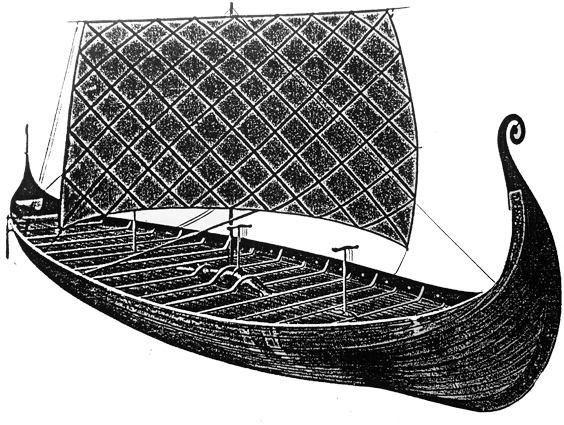The lands given to or taken by the Danes were known as Danelaw, just as the money spent in attempts to buy them off was known as Danegold.
For the next few years, peace settled on England. The Danes tilled their new soil. Alfred went about his business, much of it concerned with precautions against another attack. He built a chain of fortified boroughs and (somehing that England had before) a fleet. Since his fellow countrymen had no experience of naval warfare, he hired his mariners from the Low Countries.
Alfred's son, Edward the Elder, merged Wessex with Mercia and continued to keep the Danes in their place. His heir, Athelstan proudly called himself the King of the English and all the nations round about. Three of his sisters were, admittedly, married to important rulers. Nevertheless, it was an exaggeration.
In 979, Alfred's great great grandson, King Edward (known as The Martyr), went to see his half-brother, Ethelred, at Corfe Castle in Dorset. Exactly what happened is a mystery. Edward was certainly murdered, but he was only eleven years old at the time. His mother seems a more likely villain, for, once Edward was dead, she quickly proclaimed her son king.
Ethelred went from one blunder to another. His greatest folly was a massacre of all the Danes in Wessex. The victims included the King of Norwa's daughter. Afterwards, Ethelred had to flee for his life to France. A Dane named Cnut took over the crown and ruled until 1035.
The unhappy King Ethelred died in 1016. His son and heir, Edward, spent the next twenty-two years in exile. For much of the time, he stayed with a distant relative named William, Duke of Normandy.
Known as 'the Confessor', Edward was a very religious man. He was, perhaps, more suited to be a priest or a scholar than a king. But in 1042, a deputation of Saxon nobles came to him and asked him to rule England, and he agreed.
He was ill at ease at the high-spirited Saxon Court, preferring to spend his time overseeing the construction of an abbey at Westminster. It was completed in 1065, but Edward was too ill to attend the first service. He died a week afterwards. Towards the end of his reign, the future King Harold (son of Earl Godwin of Wessex) attended to most affairs of state.
Read previous Betrayal or next article : The World of Saxon England
Read previous Betrayal or next article : The World of Saxon England

























